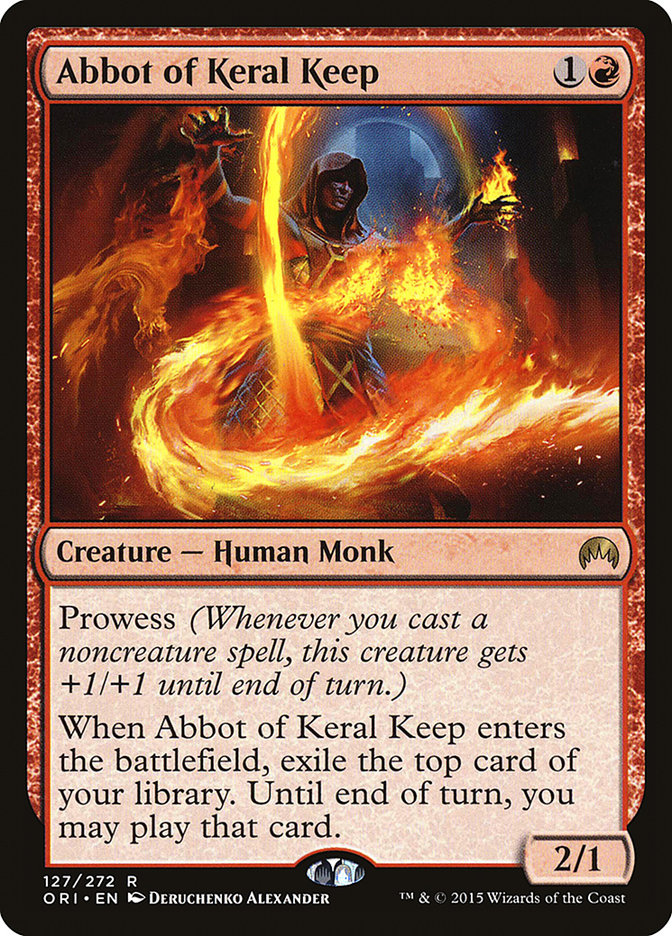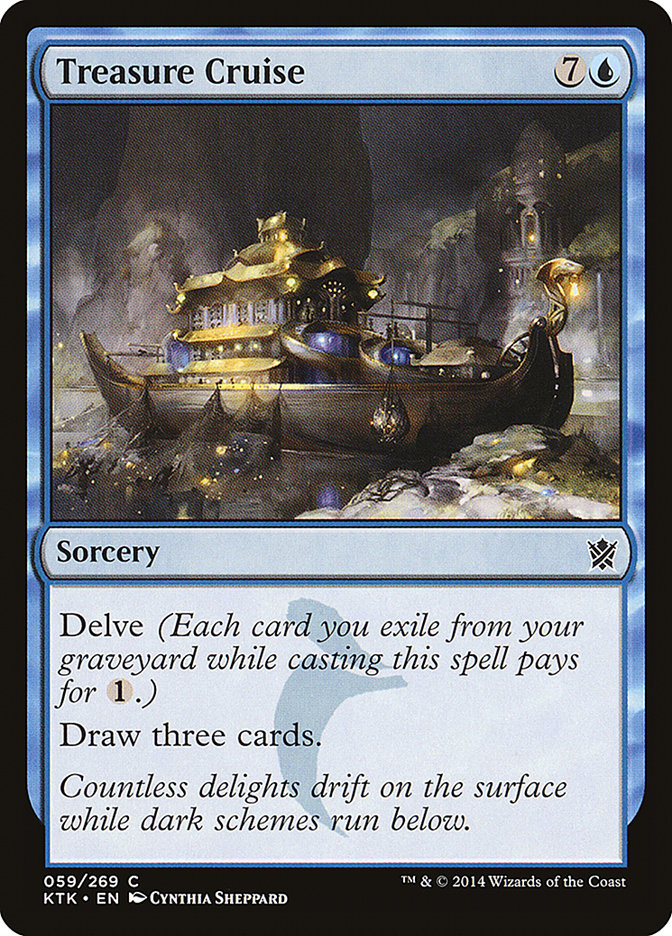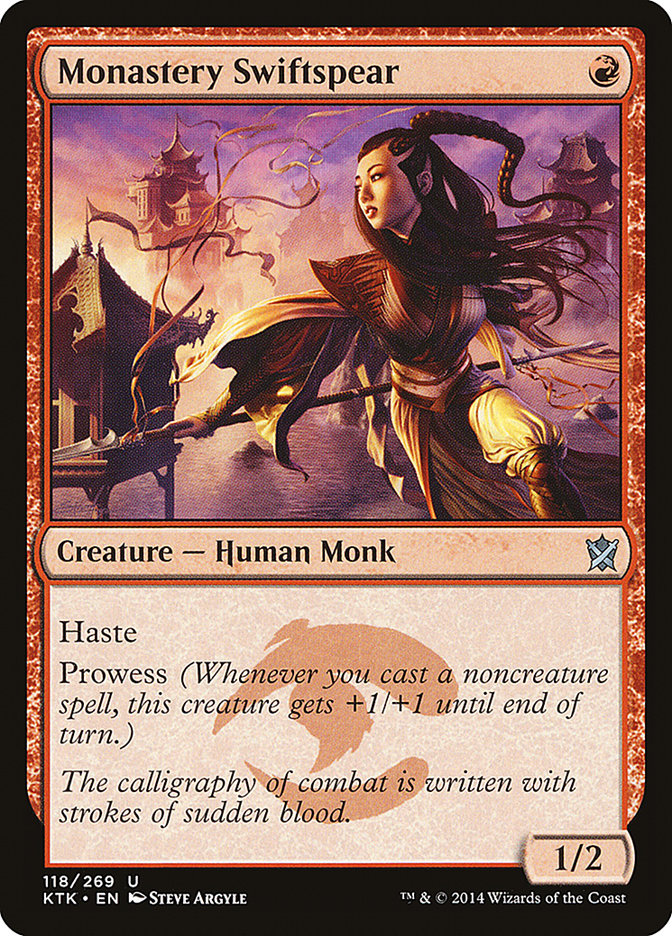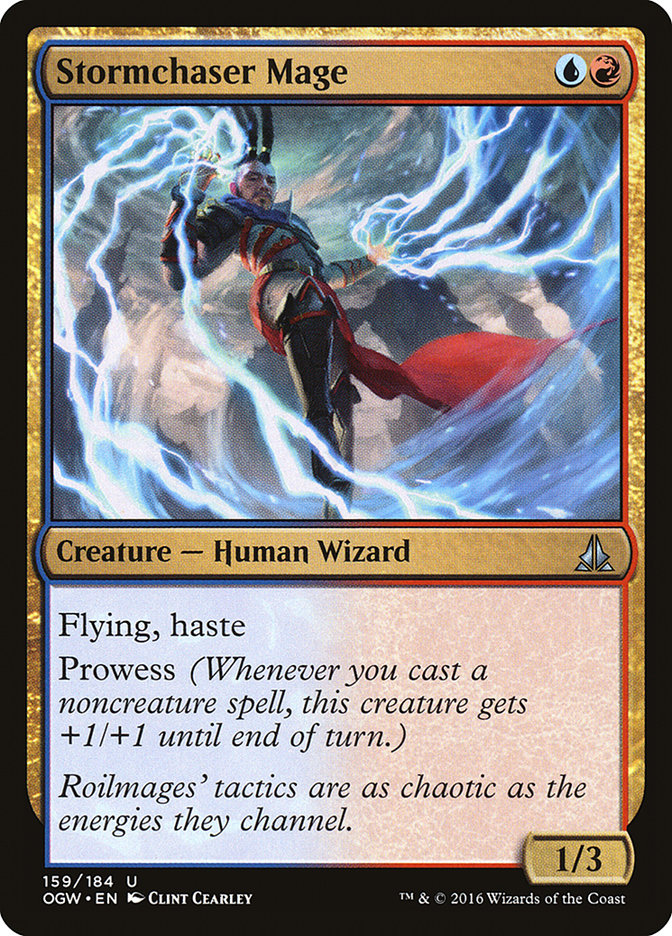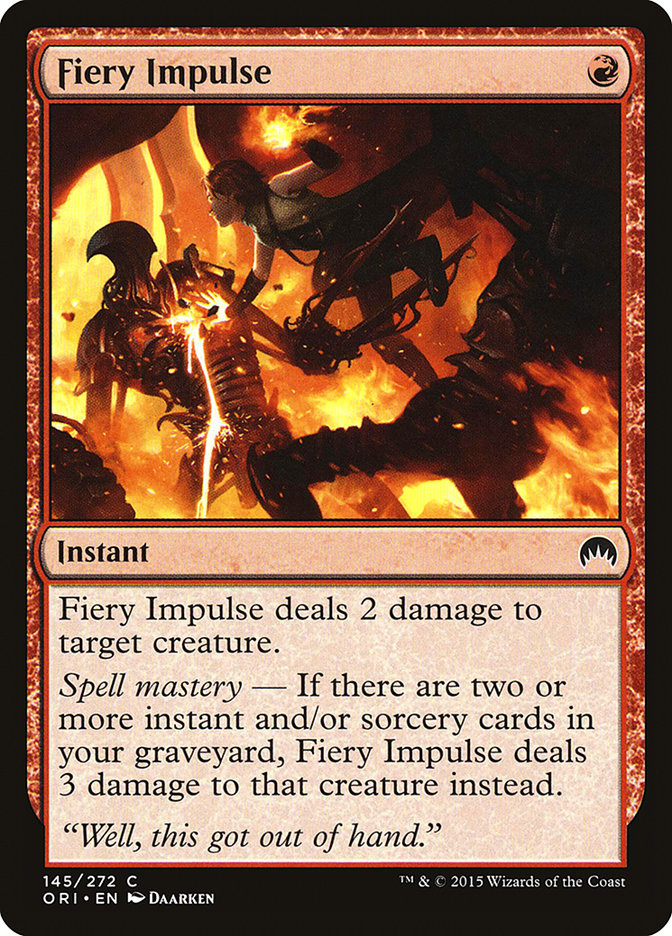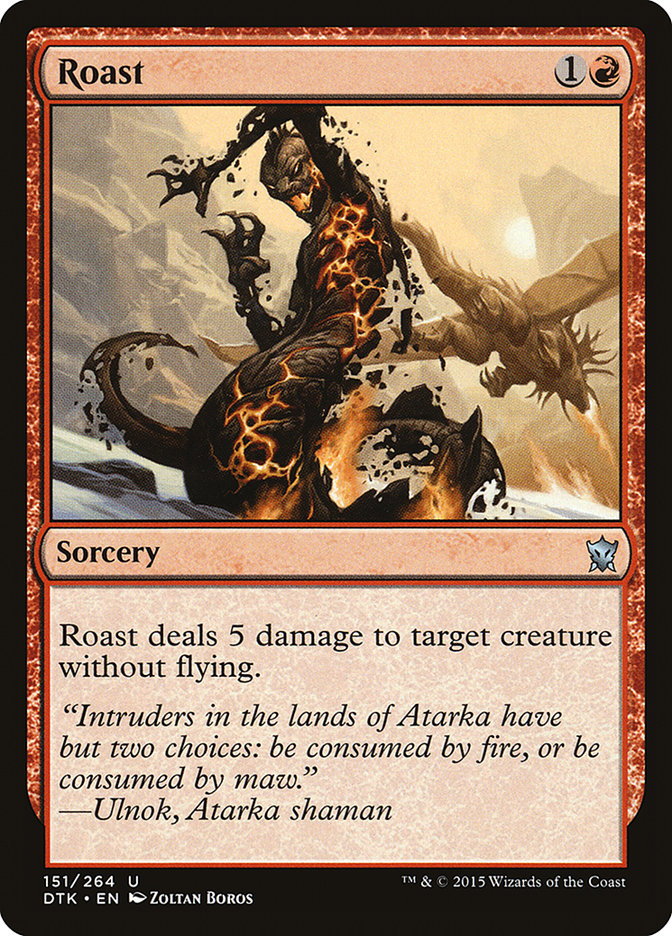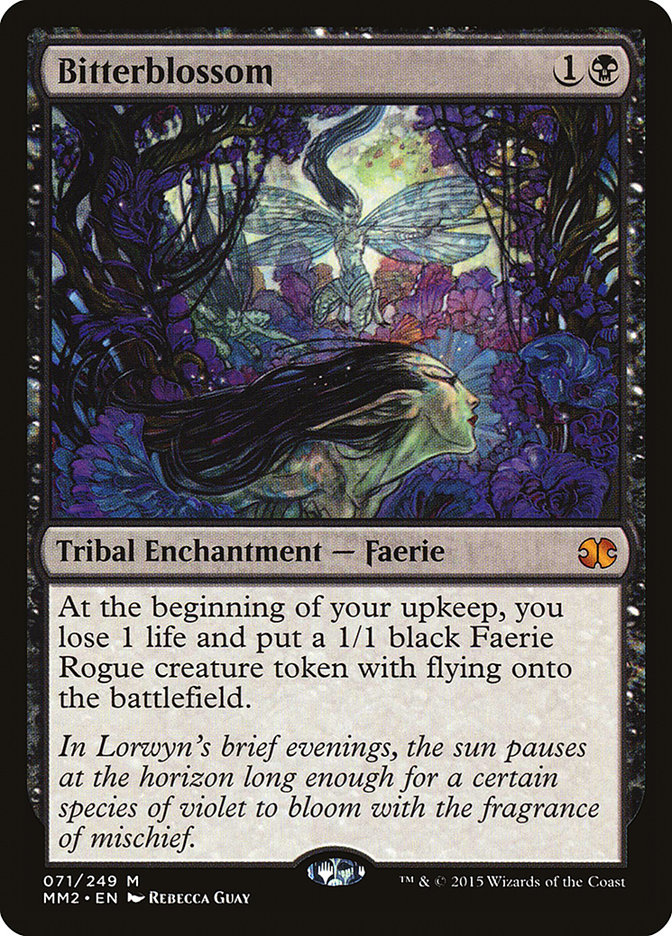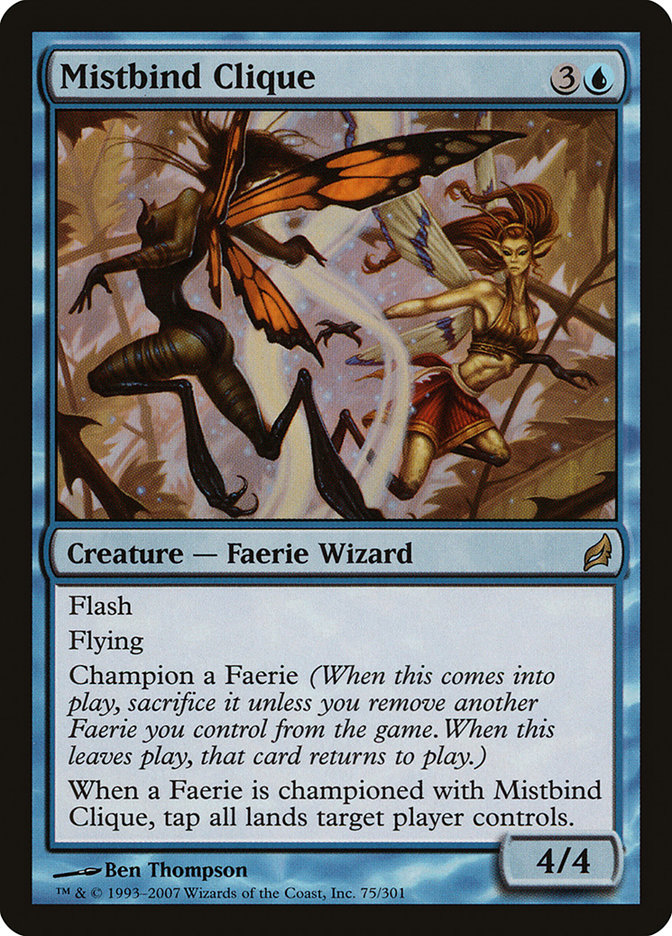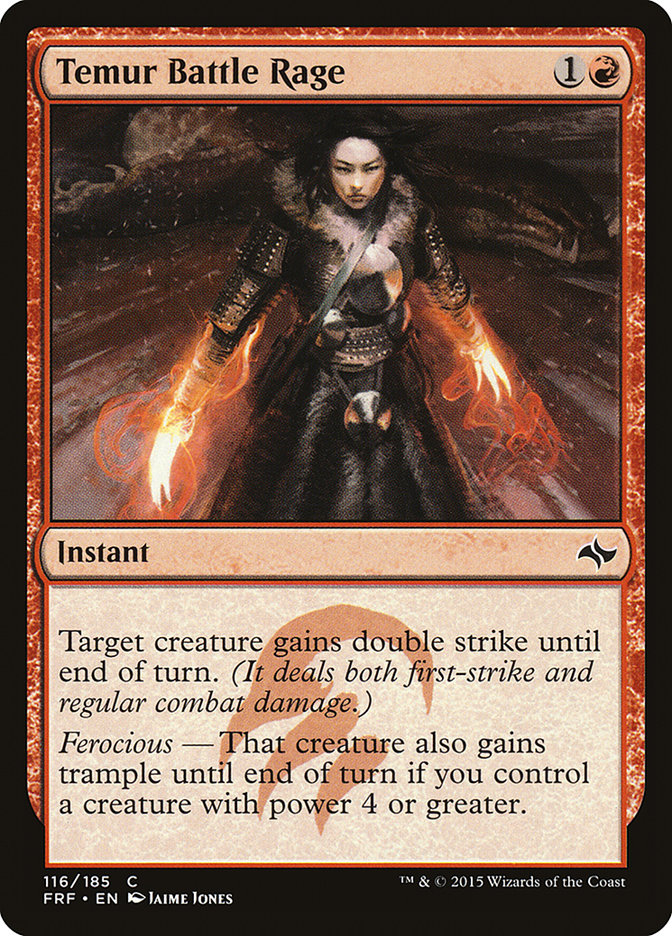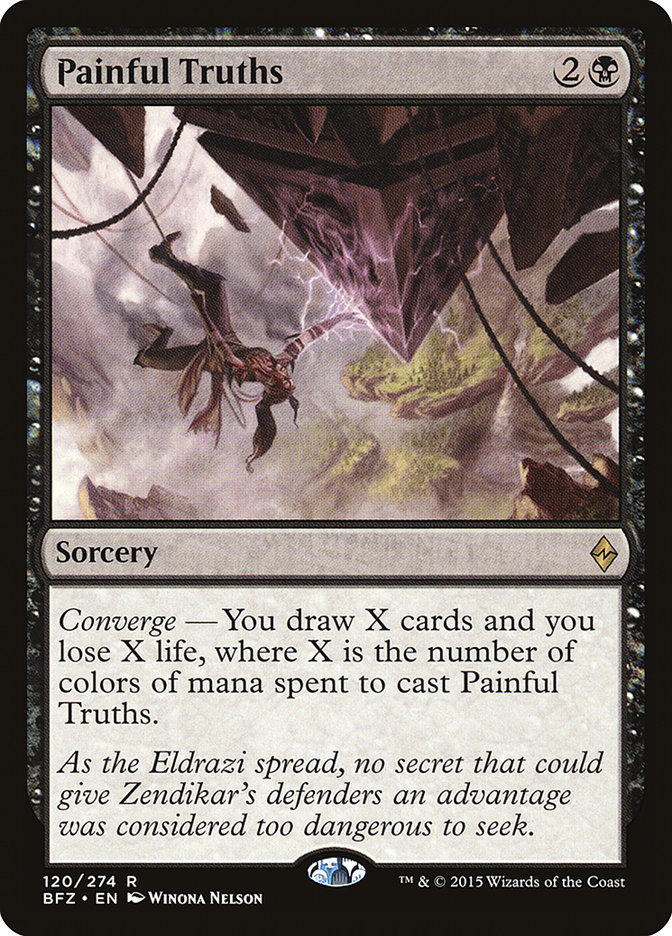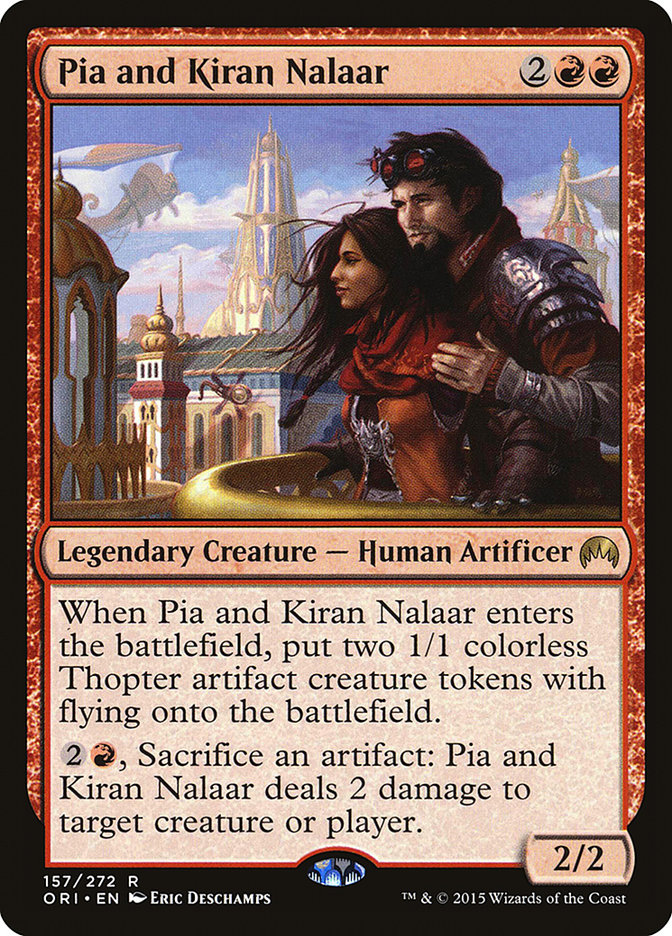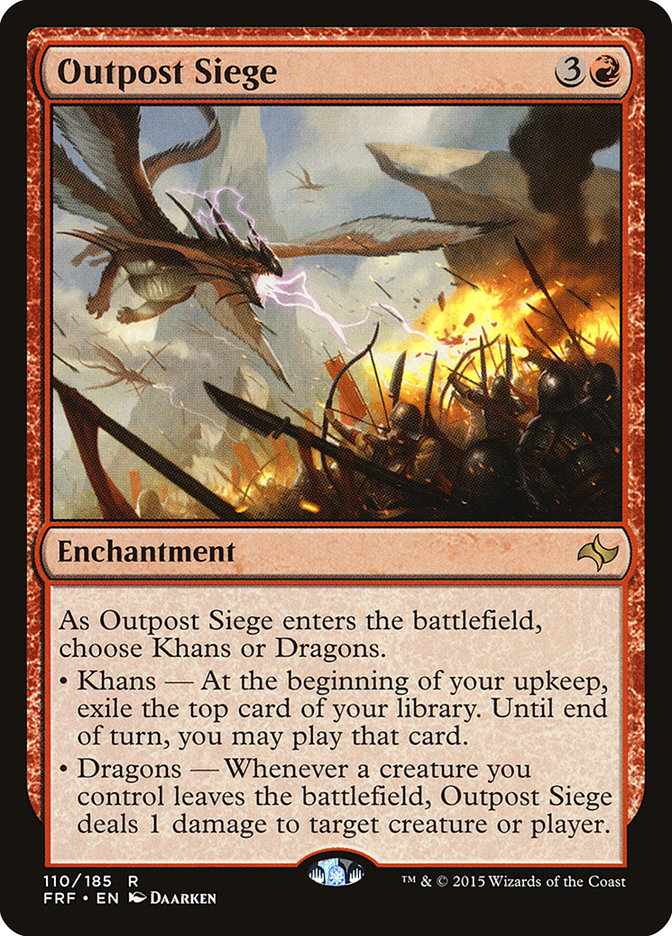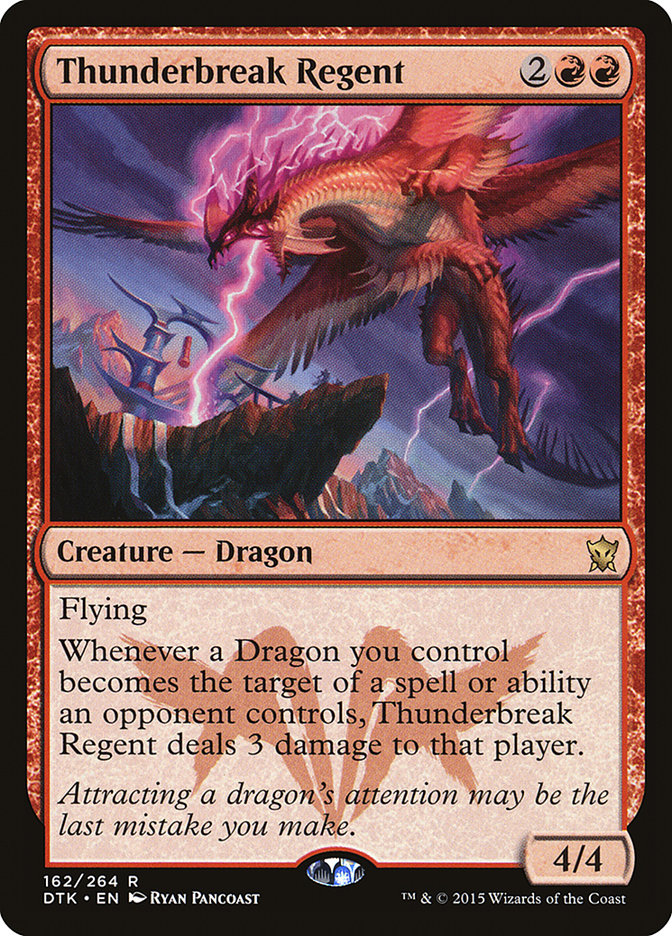In my article last week I opened with a brew for a U/R Prowess deck that took advantage of the printing of Stormchaser Mage, Slip Through Space, and Expedite to form a cohesive tempo shell in the vein of the U/W Delver deck from years past.
If I am being honest, I brewed it because it was the kind of deck I enjoy a lot, and typically when an aggro-control deck is viable, it is among the best decks in its format. However, I was skeptical that when I fully tested the deck that it would stand up to the powerful threats and removal that other decks play.
Yet in my first few games against a Mardu deck that was replete with all the best removal in the format, the deck was able to hold its own and demonstrated a level of resilience that is uncharacteristic for such decks. And it is resilience that typically marks the difference between a bad tempo deck and a format-warping one.
The key aspect of tempo decks is that they have a lot of moving parts. You have to make room for enough threats, enough lands, enough card filtering, and enough interaction for the deck to function, and you need to be able to reliably find each part of your deck in the proper proportions. This typically leads to two things:
1) A deck that needs a higher velocity than is available in a Standard card pool in order to achieve the necessary consistency.
2) A deck that skimps on threats to make room for other spells and as such is vulnerable to piles of efficient removal.
Given that the current Standard has Jeskai Black, that makes the second point a large concern, so I was mentally prepared for another failed attempt at making tempo work in Standard. Instead I found a deck that is capable of huge outbursts of damage because of Slip Through Space and Titan’s Strength but can also win games going long on the back of Jace, Vryn’s Prodigy, Abbot of Keral Keep, and Treasure Cruise.
There is a reason Treasure Cruise is banned in Modern and Legacy. The last time I saw a Standard deck utilize Cruise as well as this one was during the time Jeskai Ascendancy was taking over. You may be discouraged by the fact that that deck slowly faded away after its breakout at the World Championships, but it did so because it was forced to play some weak cards like Raise the Alarm and was very dependent on sticking an Ascendancy. The Prowess deck has access to plenty of individually powerful cards. Don’t believe me?
The creatures:
Monastery Swiftspear – Multi-format staple since it was printed.
Stormchaser Mage – Monastery Swiftspear with flying.
Abbot of Keral Keep – Efficient body with a built-in 2-for-1.
The removal spells:
Fiery Impulse – The best removal spell in Standard.
Roast – Solid role-player since it was printed.
Is the worst card in the deck Titan’s Strength? That sounds like a good place to be to me.
Before I go any further, I would like to go into more detail about a card choice in my list that may seem strange. That card is Jace, Vryn’s Prodigy, which on the surface does not seem to mesh with the many aggressive elements this deck contains.
In order to understand Jace’s place in the deck, you must first realize that this deck is fundamentally different from an aggro deck like Atarka Red. It may have games that play out very similarly, and those games may occur frequently, but it is still only one part of the well-rounded package that makes a successful aggro-control deck so powerful.
On the most fundamental level, aggro-control or tempo decks are trying to maneuver the game to a point where their opponent is unable to effectively deploy their threats given the amount of resources they have. This always involves having the capability of presenting a fast clock (think Faeries with an early Bitterblossom–Mistbind Clique draw, U/W Delver with Delver-Geist, or Temur Delver in Legacy with Delver-Goyf), but instead of supplementing that clock with cards that are solely focused on maximizing your early damage output, you include a healthy amount of disruption for your opponent’s game plan.
With this construction, your ideal game plan involves using efficient threats to establish a small tempo lead, and then using your disruption to widen that lead until it is insurmountable. It also means that the deck is not dependent on getting ahead early because you can use your disruption to stay in the game until you turn the corner. You need to be able to adapt to several types of games and play effectively at all stages.
Jace is an incredible card at both pressing an early advantage because you can recast your disruptive spells and also excellent at staving off early pressure before turning the corner by using its +1 ability on opposing creatures while you set up a sequence where its -3 ability can put you on the offensive.
This versatility is key for aggro-control decks to have and one reason why Jace is an integral part of the deck. Like your other threats, Jace will end the game if unanswered for too long, even if it does not eliminate your opponent’s life points directly. The last benefit of Jace in a deck like this is the card filtering. I mentioned earlier that aggro-control decks have a lot of moving pieces, and Jace ensures that you draw those pieces in the correct proportions much more often than you would otherwise.
A good heuristic to use when building an aggro-control deck is that you want all your cards, threats, answers, and card draw to be the most efficient cards possible. That does not necessarily mean cheapest overall because you do not want to sacrifice power, but the cards that have the best blend of low cost and high power. So no, Jace is not aggressive, but it is a great threat in this deck and I doubt the list would be viable without it.
With that said, here is my list of core cards for the U/R version of the deck. Something very drastic in my understanding of the deck or the Standard metagame would have to change for me to consider cutting any of these cards.
1 Roast
4 Titan’s Strength
With a land count of 21-22, which I currently prefer, that leaves five to six open spots and there are plenty of options. Before I look at what those options are, I would like to briefly explain the inclusion of Temur Battle Rage in this list along with the lack of the fourth Treasure Cruise.
Temur Battle Rage performs a vital function in this deck and that is in adding a new angle of attack with which to threaten your opponent. In combination with our cheap cards generating a pile of Prowess triggers, especially if one of those cards is Titan’s Strength, the deck has a combo element that can win games from very far behind or close out games very quickly when ahead. This combo element is further strengthened by the presence of Slip Through Space, making potential blockers irrelevant.
In addition to winning games out of nowhere, the threat of the combo is important in a deck like this because it forces your opponent to respect it and play more conservatively than they otherwise would. Doing so strengthens all the other elements of the deck because it often results in a free tempo gain. A singleton Temur Battle Rage may seem strange, but with Treasure Cruise, Jace, and cantrips it is not difficult to dig through twenty or 30 cards to find it, so I think it is important to always have access to at least one. In metagames where the combo element is more important, I could see adding one or two more.
The lack of a fourth Cruise is solely due to the possibility that the deck can splash black for Painful Truths. Bloodstained Mire, Polluted Delta, Smoldering Marsh, and Sunken Hollow give the deck an easy set of nine or more black sources, which means we can play a few black cards. Painful Truths is a great option that can alleviate some of the strain Delve cards put on the graveyard. Cutting a Cruise may also make it possible to play a single copy of Murderous Cut as an additional removal spell for big creatures that is also the most efficient available in the format. Given that we cannot overload on card draw spells, I can see only playing three copies of Cruise to make room for these options.
One card that may seem great to splash for that I am not a fan of is Kolaghan’s Command. This deck is looking for efficiency out of its spells and this one, while powerful and versatile, is prohibitively expensive. It sits in a strange place as a worse removal spell than other options and a much worse card advantage spell than both Treasure Cruise and Painful Truths.
The rest of the slots really come down to how you want to tune the deck. With the high velocity this deck has, these slight differences are more noticeable so each slot should be considered carefully. These slots should also be highly dependent on the current metagame. If you expect to play against a lot of Abzan, then include more removal for big creatures. Against Jeskai Black you will want more card draw. And against ramp you will want to emphasize the combo game plan while possibly including a maindeck counterspell.
Given these considerations, this is my current list:
Creatures (16)
Lands (21)
Spells (23)
- 1 Dispel
- 4 Titan's Strength
- 4 Treasure Cruise
- 2 Temur Battle Rage
- 2 Roast
- 4 Fiery Impulse
- 2 Expedite
- 4 Slip Through Space
Sideboard

In the maindeck I have made my choices in order to maximize my own game plan as much as possible in preparation for a more open and less-tuned metagame than expected. As such, I did not include any black cards in the main so I could streamline the mana and cut down to 21 lands. Going down to 21 necessitated having more cantrips, so two copies of Expedite have made the cut. These cantrips only make Treasure Cruise better, so without any Painful Truths the fourth copy is an easy inclusion.
The last slots went to a second Roast and a second Temur Battle Rage. It is possible that even six removal spells is too few and I am definitely afraid of Siege Rhino, but I do not expect a lot of Abzan this week as players explore new strategies, so I am comfortable keeping it at six main and sideboarding more removal.
The second Battle Rage is due to my desire to increase my combo potential in the face of ramp decks that should be popular with the printing of Kozilek, the Great Distortion and Kozilek’s Return, as well as the hype that is being placed on Rally the Ancestors decks. Such decks are also capable of playing a long game and winning out of nowhere, and because they can generate so many blockers on the ground I think the combo game plan is important in that matchup.
The sideboard is where I have made significant changes from last week. The black splash is certainly present there, where we find a Painful Truths for Jeskai Black and similar removal-heavy decks, a Murderous Cut over the fourth Roast since I plan to trim a Treasure Cruise against Abzan, and a recent addition to the deck in Duress.
Duress can act similarly to a counterspell by clearing the way for your threats to stick or taking a key ramp spell from your opponent, but it has some clear advantages over its blue brethren. The first is you can cast it proactively on your turn, so it will always trigger prowess for value. The second is that it can take away both Painful Truths and Treasure Cruise, which only Negate, the weakest of the counterspell options, can do. Stripping your opponents of their card draw spells in attrition matchups is an important tool to have available, and I expect Duress to perform very well here.
I went over Pia and Kiran Nalaar last week and I still favor it as a big spell, but I would like to briefly mention the other options.
Outpost Siege is certainly the best at generating resources, but this deck does not have anything in the late game as powerful as Soulfire Grand Master loops, and I doubt Outpost Siege reverses the arrow of inevitability in our favor, so I favor something aggressive.
Thunderbreak Regent goes a bit bigger than Pia and Kiran Nalaar, and while it is worse against spot removal, it is better against Radiant Flames. I do not foresee Radiant Flames as being a significant problem for this deck, since you should be able to pace your threats so as to not make it valuable, but if that is not the case, this is where I would look for a replacement.
It has been a while since Standard has contained such a mass of effective, cheap spells and I for one am ready to take advantage. For those who remember the U/W Delver days, it took quite a while for that deck to take shape and become fully tuned and I certainly expect nothing different here, but the reward is having a deck that frequently feels like it is playing Modern against Standard decks…and I could really use some Modern practice for the upcoming Pro Tour.



